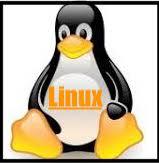Table of Contents
With the impending doom of Windows 7, we get an increasing number of users asking me if moving to Linux is a viable alternative to making the jump to Windows 10. In this article, we will be covering the pros and cons of switching to Linux to help you make an informed decision on whether or not Linux is for you.
What is Linux?
Linux refers to a diverse ecosystem of operating systems that are based on the Linux kernel. A kernel is the software that is at the core of every operating system, including Windows and MacOS, and it dictates how the software and hardware interact. You may already be aware of some of the more popular distributions (or “distros” as they are commonly called) that are built upon the Linux kernel like Ubuntu, Redhat, and Mint. There are hundreds of Linux-based operating systems out there, and they are not solely reserved for created desktop and server operating systems. Android, Playstation 4, and any number of IoT devices use the Linux kernel as well. For the sake of this article, we will keep our focus on desktop and server distributions.
How do I know if Linux is for me?
Linux is a much more user-friendly operating system now than it ever used to be. Most distros ship with a graphical user interface (GUI) and there are now many different flavors of desktops to choose from to tailor your experience to your liking. Most of the software available on the store is open-source and free, and you can usually find an alternative or equivalent application that will compare to what you might be using on Windows or MacOS.
Sounds Simple Enough, Right? Well..
With the above being said, Linux is not for everyone. While it tends to work well on most hardware, you might find that some assembly may be required when it comes to proprietary hardware. Installing the drivers needed for the devices (typically video cards, WiFi adapters, and other expansion cards) isn’t always straight forward, so for some, it can be frustrating to get their system up and running. You also might find that the software may not be as polished or user friendly as the Windows/Mac equivalent, so there may be a learning curve to get over. At the end of the day, if you want an operating system that “just works,” then you are probably better off making the jump to Windows 10. However, for the self-learners out there that do not mind taking the time to expand your Linux knowledge, you might find yourself among the individuals that appreciate how special Linux can be.
Where do I Start?
The first step is to decide which distro of Linux you would like to install. There are hundreds of distros to choose from, and this can seem rather daunting at first. Which distribution you pick will depend on what you will be doing with your system.
For home or office use, we would recommend a Debian based distribution like Ubuntu or Mint. There are far too many Debian derivatives to list here, but I have found Ubuntu and Mint to be friendly to new users. Both have a robust GUI (Graphical User Interface) and are well supported by the developers. We would recommend that you grab the ISO directly from the distrobution’s website. Below are the download links and install guides for both Ubuntu 18.04 and Mint 19.
| Ubuntu 18.04 | Install Guide | |
| Mint 19 | Install Guide |
Another factor to consider when looking at your distro options are the applications supported. If you are coming from Windows, then a lot of the software that you are used to using may not be available or compatible with Linux. You may be able to get Windows software to work with the use of an application called “Wine,” but it can take a lot of time and research to find the right tweaks to make to get the software working. Instead, we would recommend that you take a look to see if there is an alternative or equivalent software offered on Linux. One of the benefits of being an open-source platform is that a lot of the software is free to use, but you will find that there will be differences; so take the time to try the software to see if it is something you are ready to learn and work with. If you do find your software, or the equivalent, available for your prospective distro then you are ready to give it a try.
In Closing…
A Linux distribution can be a great option if you are comfortable and have time transitioning to a new operating system. There will be some learning involved if you plan on picking up Linux for the first time. It isn't for everyone, but generally if you are willing to find out why Linux continues to grow in popularity, you may be pleasantly surprised with what you uncover.
Need help with your Puget Systems PC?
If something is wrong with your Puget Systems PC, we are readily accessible, and our support team comes from a wide range of technological backgrounds to better assist you!
Looking for more support guides?
If you are looking for a solution to a problem you are having with your PC, we also have a number of other support guides that may be able to assist you with other issues.
